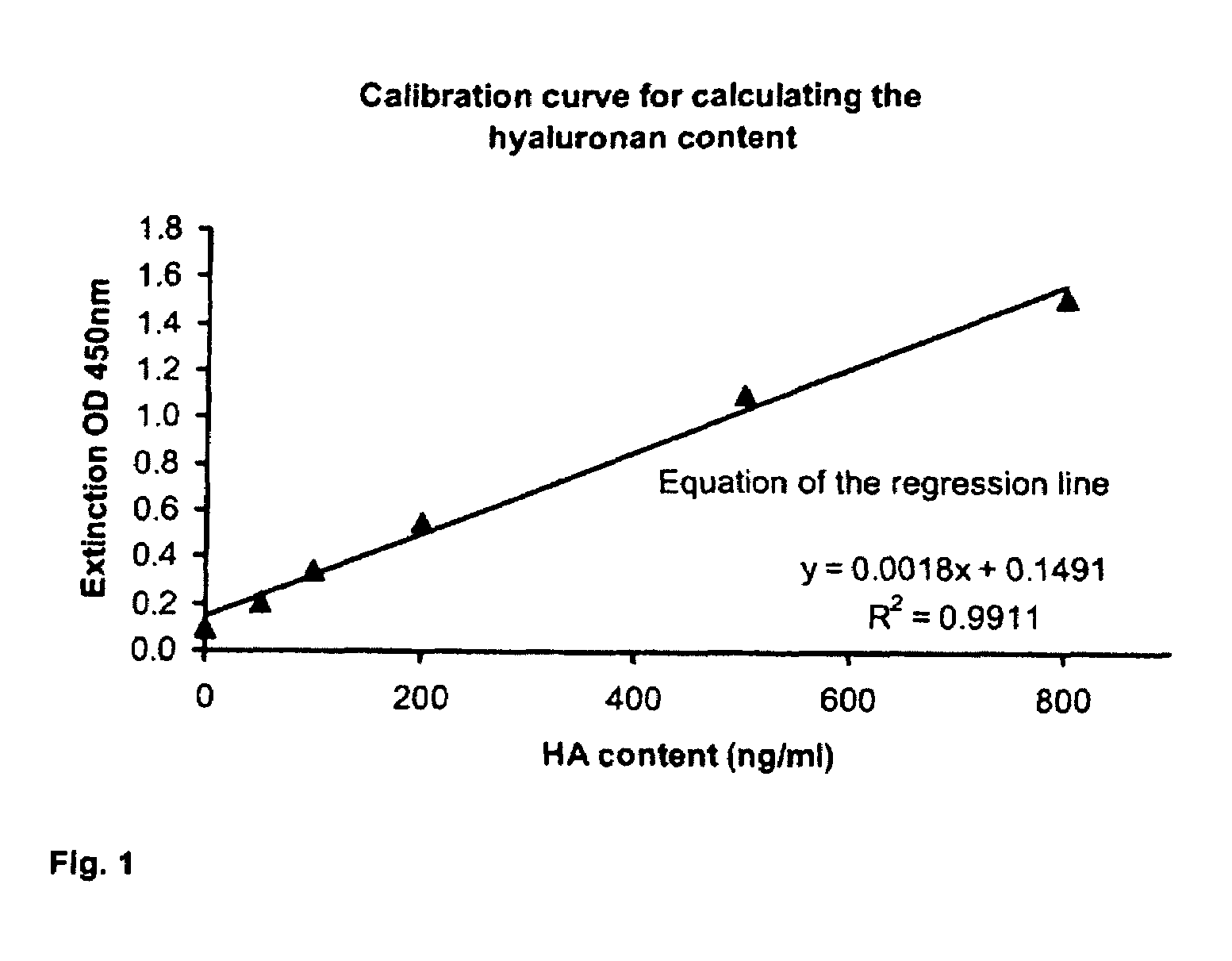Methods and means for producing hyaluronan
a technology of hyaluronan and hyaluronan, which is applied in the field of methods and means for producing hyaluronan, can solve the problems of difficult purification and isolation of hyaluronan prepared with the aid of i>streptococcus /i>strains, the presence of exotoxins and hemolysins in the preparations, and the inability to detect hyaluronan
- Summary
- Abstract
- Description
- Claims
- Application Information
AI Technical Summary
Benefits of technology
Problems solved by technology
Method used
Image
Examples
examples
1. Preparation of the Plant Expression Vector IR 47-71
[0326]The plasmid pBinAR is a derivative of the binary vector plasmid pBin19 (Bevan, 1984, Nucl Acids Res 12: 8711-8721) which was constructed as follows:
[0327]A fragment of a length of 529 bp which comprised the nucleotides 6909-7437 of the 35S promoter of the cauliflower mosaic virus was isolated as EcoR I / Kpn I fragment from the plasmid pDH51 (Pietrzak et al, 1986 Nucleic Acids Res. 14, 5858) and ligated between the EcoR I and Kpn I restriction sites of the polylinker of pUC18. In this manner, the plasmid pUC18-35S was formed. Using the restriction endonucleases Hind III and Pvu II, a fragment of a length of 192 bp which included the polyadenylation signal (3′ terminus) of the Octopin Synthase gene (gene 3) of the T-DNA of the Ti plasmid pTiACH5 (Gielen et al, 1984, EMBO Journal 3, 835-846) (nucleotides 11 749-11 939) was isolated from the plasmid pAGV40 (Herrera-Estrella et al, 1983 Nature, 303, 209-213). Following addition o...
PUM
| Property | Measurement | Unit |
|---|---|---|
| pH | aaaaa | aaaaa |
| pH | aaaaa | aaaaa |
| weight | aaaaa | aaaaa |
Abstract
Description
Claims
Application Information
 Login to View More
Login to View More - R&D
- Intellectual Property
- Life Sciences
- Materials
- Tech Scout
- Unparalleled Data Quality
- Higher Quality Content
- 60% Fewer Hallucinations
Browse by: Latest US Patents, China's latest patents, Technical Efficacy Thesaurus, Application Domain, Technology Topic, Popular Technical Reports.
© 2025 PatSnap. All rights reserved.Legal|Privacy policy|Modern Slavery Act Transparency Statement|Sitemap|About US| Contact US: help@patsnap.com

